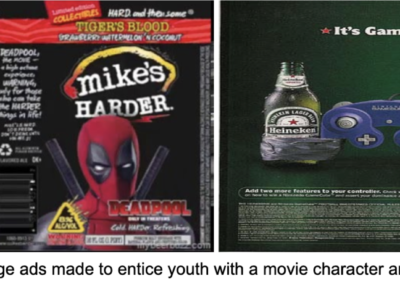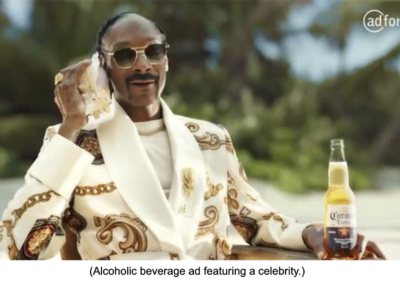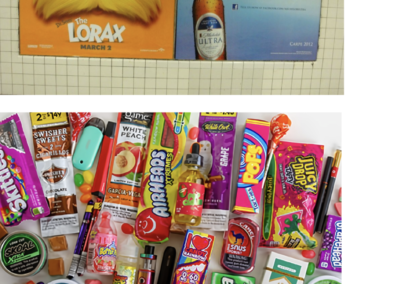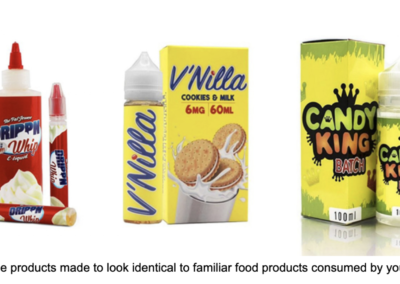The Impact of Social Norms and Alcohol Use on the Young Brain
By WRVT I April 20, 2025 I Blog
Alcohol is one of the most widely consumed substances in the world. The risks associated with alcohol use are particularly dangerous for young people. Adolescence is a time of emotional, physical, and social development which makes teens more vulnerable to the negative effects of alcohol.
Alcohol can impact brain development, cognitive function, and lead to long term consequences, such as addiction, and mental health concerns, specifically anxiety and depression. When consumed during adolescence, Cognitive function may become impaired, specifically in the areas of memory, learning and executive functioning. Executive functioning skills are developing at this age, and are responsible for problem solving, decision making, planning and impulse control. When these areas are impaired, it makes youth more vulnerable to make impulsive decisions, use poor judgement and it makes it more difficult to manage emotions.
Social norms – the unwritten rules that govern behavior in a group or society – play a powerful role in influencing adolescent behaviors and decision making regarding alcohol use. These norms may be shaped by cultural values, peer pressure, media portrayal and familial expectations.
Movies, music videos and television often portray alcohol use as glamorous, or celebratory, which reinforces the idea that drinking is normal, desirable and fun. Many popular songs among youth often contain lyrics that emphasize alcohol or drug use. Unfortunately this media portrayal often overlooks the risks associated with underage drinking.
Peer pressure is another key component of social norms. Adolescents are particularly susceptible to the influence of their peers, often feeling pressure to conform to group behaviors to fit in. If a youth’s social group engages in drinking, they may feel the need to do that same thing to avoid feeling excluded or to be accepted into a social group.
Family norms and attitudes can also shape a young person’s perception of drinking. Families that normalize alcohol use, or do not set clear boundaries may unintentionally send the wrong message that alcohol consumption is acceptable at a young age. Engaging in conversation about alcohol use and setting firm, consistent expectations, can help reduce the likelihood of underage alcohol use.
While social norms can be a powerful source for perpetuating alcohol use among youth, they can also be a tool for change. Shifting societal perceptions about underage drinking is essential to long term prevention efforts. Changing the narrative around alcohol involves challenging the glamorization in the media and promoting information that emphasizes the risks and negative consequences of underage drinking.
Ultimately, the goal is to encourage behaviors that prioritize long term health and well-being and make underage alcohol use less socially acceptable. The influence of negative social norms is undeniable but by promoting healthy alternatives, educating on the risks of youth alcohol use, and fostering a supportive environment both at home and in the community, we can help shape a generation of young people who are empowered to make choices that will lead to happy, healthy lives.
Vaping and Mental Health: How Vaping Can Impact the Teen Brain
By WRVT I March 20, 2025 I Blog
In recent years, vaping has become a popular activity among teens, often seen as the “cool” alternative to smoking cigarettes. However, what many teens do not realize is the impact that vaping can have on mental health, leading to problems that can affect their emotional well-being, behavior, and cognitive function. As vaping use continues to rise, it is important to understand the connection between vaping and mental health and how the habit can be much more harmful than it appears.
Nicotine is a key ingredient in most vape products. Nicotine is a highly addictive substance that can have negative impacts on a developing brain. The teenage brain is still growing and developing and is especially vulnerable to the addictive properties of nicotine. When youth vape, they are exposing their brain to harmful chemicals, including nicotine, which specifically impacts the brain in the areas responsible for learning, memory and emotional regulation.
Nicotine can also play a role in mood instability, which is often a characteristic seen in teens who vape. Studies have shown that nicotine can increase anxiety, stress and depression in youth. For those who are already struggling with these mental health concerns, adding nicotine can make things worse.
One of the most common side effects of vaping for young people is an increase in stress and anxiety. Nicotine stimulates the release of dopamine, which is a neurotransmitter responsible for feelings of pleasure. While this may feel good initially, the feeling eventually wears off, leading to withdrawal symptoms, or the want or need for more. Some common nicotine withdrawal symptoms include irritability and anxiety.
The relationship between vaping and depression is also concerning. Nicotine’s effect on the developing adolescent brain can lead to mood swings, irritability and feelings of sadness, which makes it hard for teens to regulate their emotions. These mood fluctuations make it difficult for young people to manage and cope with stress and life changes, which may make them more vulnerable for more serious mental health issues down the road.
Understanding the relationship between vaping and mental health and its effect on the developing adolescent brain is crucial when encouraging teens to make informed decisions and protect their emotional well-being. With the appropriate support and education, we can help prevent vaping from taking a lasting toll on the mental health of our youth.
Additional Resources:
SAMHSA “Talking with Your Teen About Vaping”: https://library.samhsa.gov/sites/default/files/pep20-03-01-080.pdf
Meg Paraspolo, West River Valley Tobacco Specialist: wrvtprograms@gmail.com: Contact Meg if you feel your child would benefit from additional support in the form of tobacco cessation or resources.
PARENT UP “Why is My Child At Risk for Misusing Drugs and Alcohol?”:
https://parentupvt.org/why-is-my-child-at-risk
Sara Webb, Parent Engagement Specialist; wrvtengaged@gmail.com: Contact Sara for a copy of the “Operation Parent Handbook” which includes info on vaping, nicotine, & mental health.

Teens and Prescription Drug Abuse
Opioid Dependence Peaks among Younger Age Group, Study Finds A Michigan State University study found that 14- and 15-year-olds are at a higher risk of becoming dependent on prescription drugs within a 12-month period after using them extra-medically, or beyond the...
ACT 46 DISCUSSION
ACT 46 DISCUSSION January 11, 2016 Townshend Elementary School Auditorium 7:30 – 9:00 Please join the TES School Board and Administration in an Act 46 Informational meeting / discussion. This will be a community effort and we welcome and encourage your involvement in...

FREE supper and concert this Saturday
Come join us this Saturday for food and music at the town hall, an event put on by Townshend's Community Hope & Action group! There will be dinner from 6-7 and music from 7-9. Additional appetizers and desserts are welcome. Bring your family and friends! ...

Understanding Your Influence
Check out this great video produced by CADCA (Community Anti-Drug Coalitions of America): http://mctft.org/training/understanding-your-influence/ During the hour-long broadcast Understanding Your Influence, learn how to find your inner advocate and how coalitions can...

Community Concert was a blast!
This past Saturday, the Community Hope & Action group put on its second community supper and concert of this year's community concert series. The event was held at the Townshend Town Hall and many folks came out to enjoy dinner, music and good company. This...

Free Community Concert and Supper!
The Community Hope and Action group of Townshend will be putting on a free supper and concert on November 21st from 6-9pm at the Townshend Town Hall! Local band, Ten Gallon Swing, will be performing. This is an alcohol-free, family friendly event with childcare...

Above the Influence group completes Edge of Leadership training
This year, four new seventh graders were recruited to join Leland and Gray's Above the Influence (ATI) group. "ATI is a national campaign inspiring groups of young people to form all over the country to raise awareness about how to stay above the negative influences...

Refuse to Use has come to Leland and Gray!
This fall, students at Leland and Gray Middle and High School will be offered the chance to participate in the Refuse to Use Program. Refuse to Use, developed by Stratton Mountain Resort and The Collaborative in 2002, provides substance use prevention education to...

Leland and Gray Fall Wellness Fair
In an effort to increase awareness about available local wellness services, Leland and Gray will be hosting a free wellness fair between 2-7 pm on October 15th. Leland and Gray Union Middle and High School is located at 2042 Route 30, located on C-Level. This event...

Greater Falls Connections, West River Valley Thrives to receive anti-drug funds
By Domenic Poli dpoli@reformer.com @dpoli_reformer on Twitter POSTED: 09/10/2015 09:31:34 PM EDT0 COMMENTS BELLOWS FALLS >> Community organizations in Bellows Falls and Brattleboro were among the four in Vermont slated to share $500,000 in grants aimed...
Mixed Messages Targeting Youth
You have surely heard of the term, “Mixed Messages”. Our understanding of a mixed message is when someone is giving off a certain feeling or vibe but their actions do not match those feelings or vibes. Someone might say they enjoy spending time with us but when we ask them for attention, they do not show up or give us what we need. Someone may devour a meal we make for them but then communicate that it was the worst meal of their life. We encounter mixed messages daily.
Sometimes, mixed messages are harder to notice than other times and those other times, they can be incredibly obvious. But, did you know there are mixed messages targeted to children? Alcohol and tobacco companies create specific mixed messages of their products, their advertisements, and their product locations within stores to lure youth in, promote their product and make them think that use of their products isn’t unhealthy for them.
Some examples of these types of mixed messages are the location of alcohol beverages in stores. Notice that oftentimes, there are alcoholic beverages directly next to non-alcoholic beverages such as iced tea that you might allow your child(ren) to have. Or how packaging on cases of beer or vape and tobacco products is colorful and eye-catching? This isn’t for you! This is for youth!
Tobacco and alcohol companies use these advertising tactics to attract youth. This is how they ensure future users of their products. They may associate their products with familiar items such as movies, cartoon characters, and celebrities or candy and snacks, making their brand appealing to youth and enticing them to try their products. These tactics reduce youths’ perception of harm when these types of products are directly marketed toward kids making the individual feel that the product must be fun and maybe even good for them.
When adult products are placed next to products that are for anyone to consume, it can be hard to recognize. Be sure to always check the labels on the product you are purchasing for your child(ren). For example, if you are buying an iced tea beverage, double check the can or bottle to make sure it does not state HARD or ALCOHOLIC. Sometimes, it can be hard to notice these details.
Below are some examples of mixed messages. It is important for adults to talk to the youth and young adults in their lives to help them recognize and understand that though the products may seem harmless and fun based on their appearance or placement in a store, they are not.




